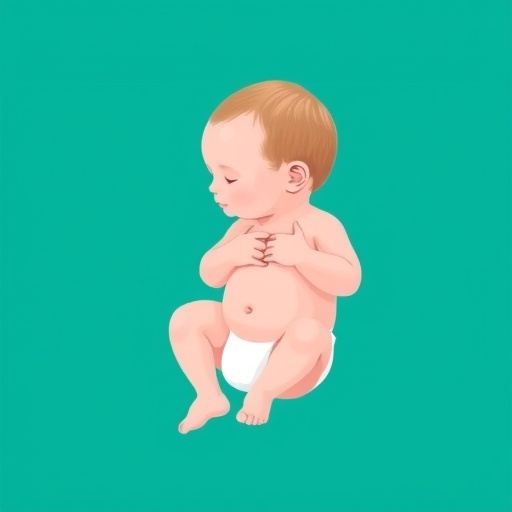
In the world of reproductive medicine, advancements in practices and protocols are continuously being explored to enhance clinical outcomes and patient experiences. A recent study conducted by Lee et al. stands out for its innovative approach to donor oocyte cycles, specifically in the management of warming protocols for cryopreserved oocytes. This study, published in the Journal of Ovarian Research, highlights significant improvements in clinical outcomes associated with a modified warming protocol, elucidating critical implications for fertility treatments globally.
The significance of donor oocyte cycles cannot be overstated. For many couples dealing with infertility, the ability to use donor oocytes can represent a lifeline to the possibility of parenthood. As such, optimizing the processes involved in these procedures is paramount. Traditional practices surrounding the warming of cryopreserved oocytes often involve standardized, albeit basic protocols. However, as the study reveals, there are potential enhancements that can be made to these established methods, paving the way for better success rates.
Initial insights from the research indicate that the modified warming protocol proposed by the authors is not just an incremental improvement but represents a paradigm shift in how we approach the thawing of oocytes. By integrating a nuanced understanding of cellular biology and cryobiology, the authors were able to devise a warming method that minimizes cellular stress and enhances viability. This is particularly pertinent in the context of oocyte quality, where even minor improvements can lead to significant impacts on fertilization and implantation rates.
The authors meticulously designed their trial to assess the efficacy of their modified warming protocol. A comprehensive approach was taken, where oocyte quality, fertilization rates, and subsequent embryo development were evaluated. The findings were compelling; the modified protocol led to a marked increase in the number of viable embryos and resulted in higher pregnancy rates when compared to traditional warming methods. This pivotal data underscores the importance of research in refining existing fertility protocols and optimizing them for better patient outcomes.
Moreover, the implications of this study extend beyond the laboratory. Fertility clinics worldwide are constantly seeking evidence-based practices that can enhance the success of ART (assisted reproductive technology) procedures. Lee et al.’s study not only provides a solid foundation for change but also acts as a call to action for other researchers and practitioners in the field. As replication of results across diverse populations and clinical settings is critical, this research sets the stage for further exploration and validation of the proposed warming protocol.
The attention to detail in the methodology of the trial is commendable and speaks to the rigorous standards that underlie scientific research in reproductive medicine. The authors employed a robust statistical analysis to ensure that their results were statistically significant, providing a level of credibility to their claims. This careful scrutiny is essential in the medical field, where decisions made based on research findings directly impact patient care.
In considering the broader context, this study contributes to a growing body of literature advocating for personalized medicine in reproductive health. As we better understand the individual variables affecting reproductive success, the possibility of tailoring protocols to meet specific patient needs becomes increasingly feasible. The modified warming protocol introduced by the authors may serve as a template for future innovations aimed at customizing fertility treatments further.
Given the emotional and psychological stakes involved in fertility treatments, the importance of improving clinical outcomes cannot be overstated. Each successful pregnancy achieved through these enhanced protocols represents not just a clinical victory but also a hopeful journey towards family building for many couples. In this regard, research such as that conducted by Lee et al. plays a crucial role in transforming the narrative around infertility and reproductive health.
Additionally, the methodology surrounding cryopreservation and thawing practices has vast implications for the ethical practices surrounding embryo storage and usage. The securing of optimal results through improved warming protocols reflects a commitment to maximizing the potential life represented by each oocyte. As technology and science continue to evolve, fertility specialists must remain vigilant in adopting and promoting practices that prioritize patient outcomes and respect for potential life.
As the landscape of assisted reproductive technology evolves, attention must also be paid to ensuring that new protocols are accessible and implementable across various healthcare settings. Fertility clinics with differing levels of resources and technology may face challenges in adopting new methodologies. Therefore, researchers, clinicians, and policymakers must work together to bridge these gaps, ensuring that all patients have access to the best possible care based on the latest research findings.
In conclusion, the study by Lee et al. presents a significant advancement in the field of reproductive medicine through a modified warming protocol aimed at improving the outcomes of donor oocyte cycles. As the research community continues to delve into the intricacies of ART procedures, it is imperative to embrace innovation rooted in scientific inquiry. By prioritizing advancements that enhance clinical outcomes, we pave the way for a future where more individuals can realize their dreams of parenthood, thus continuing to push the boundaries of reproductive health.
As this study garners attention, it serves as a reminder of the tireless efforts of researchers who dedicate themselves to improving the lives of those encountering infertility. While challenges undoubtedly remain in the field, the promising results from Lee et al.’s work shine a light on the possibilities that lie ahead.
With ongoing dialogue and collaboration among fertility specialists, researchers, and patients, we can remain hopeful for a future that embraces advancements and fosters an environment where the dreams of parenthood are within reach for all.
Subject of Research: Donor Oocyte Cycles
Article Title: Improved clinical outcomes with a modified warming protocol in donor oocyte cycles
Article References:
Lee, CI., Chen, HH., Lin, SH. et al. Improved clinical outcomes with a modified warming protocol in donor oocyte cycles. J Ovarian Res 18, 187 (2025). https://doi.org/10.1186/s13048-025-01776-2
Image Credits: AI Generated
DOI: 10.1186/s13048-025-01776-2
Keywords: donor oocytes, warming protocol, clinical outcomes, fertility treatment, reproductive medicine
Tags: advancements in reproductive medicine practicescryopreserved oocytes thawing techniquesdonor oocyte cycles optimizationenhanced clinical outcomes in fertility treatmentsfertility treatment success ratesimplications for infertility treatment protocolsimprovements in patient experiences with fertilityinnovative approaches in cryobiologyJournal of Ovarian Research study resultsparadigm shift in oocyte warming methodsresearch findings on oocyte warmingrevised oocyte warming protocol




